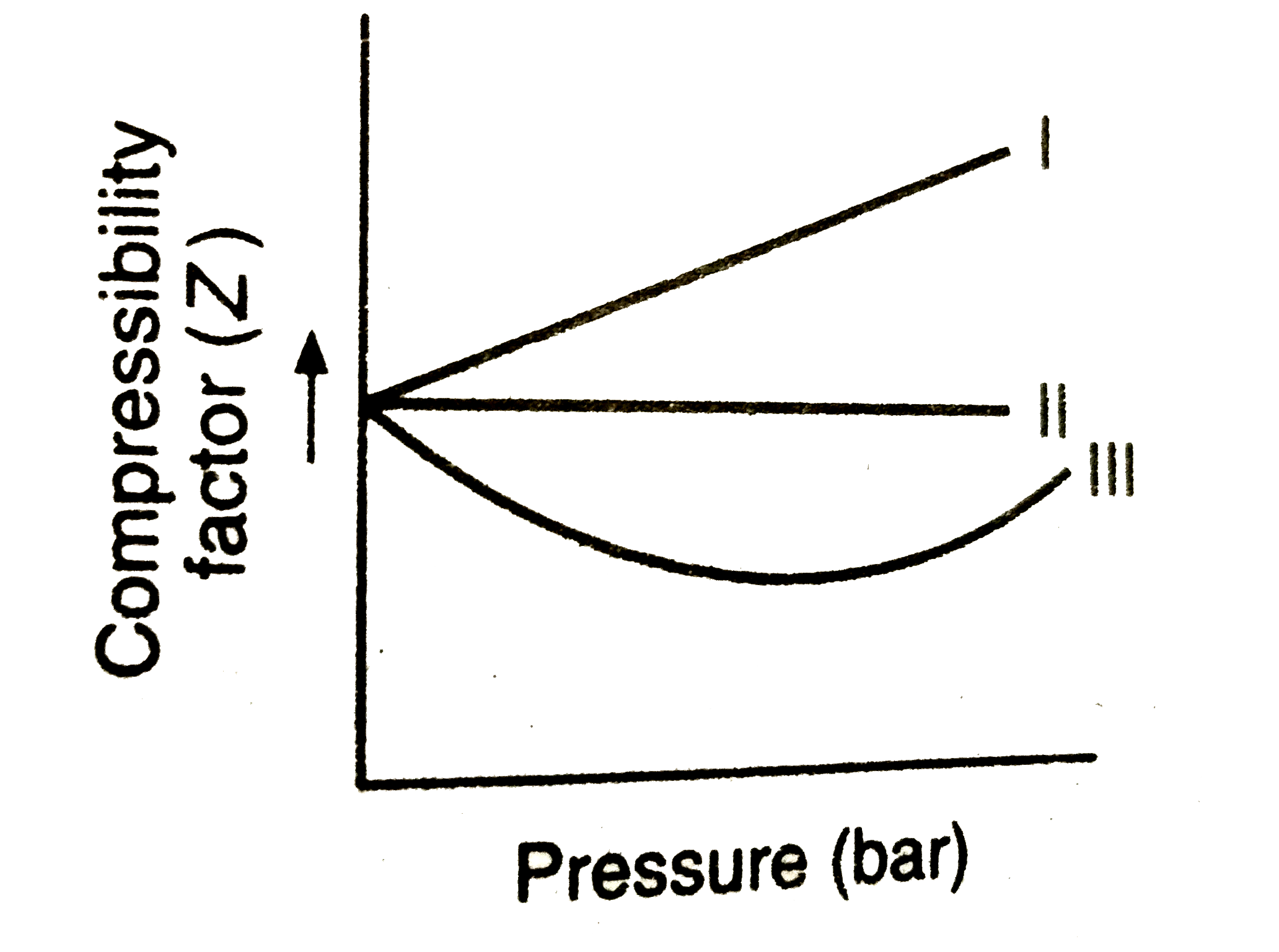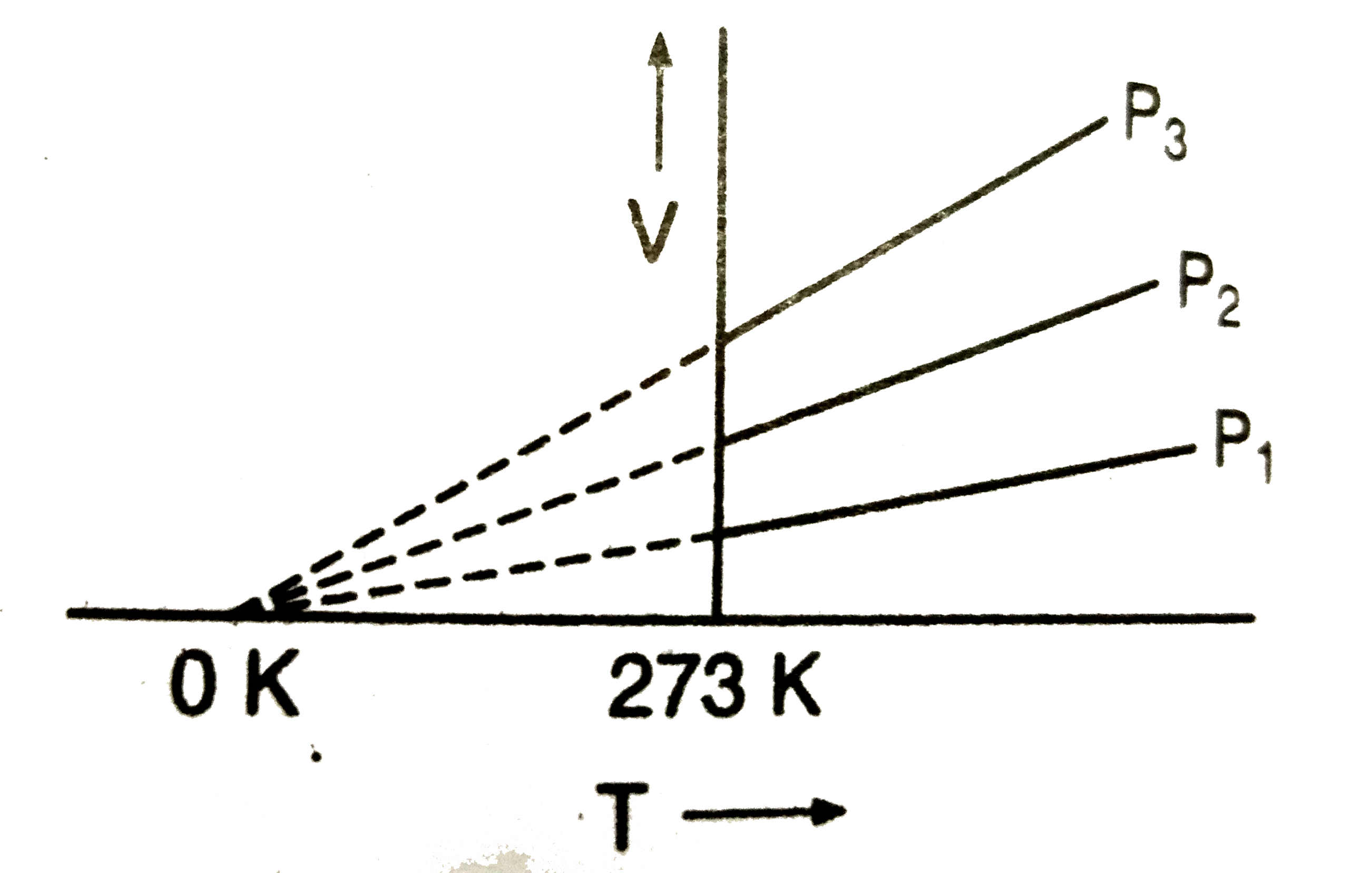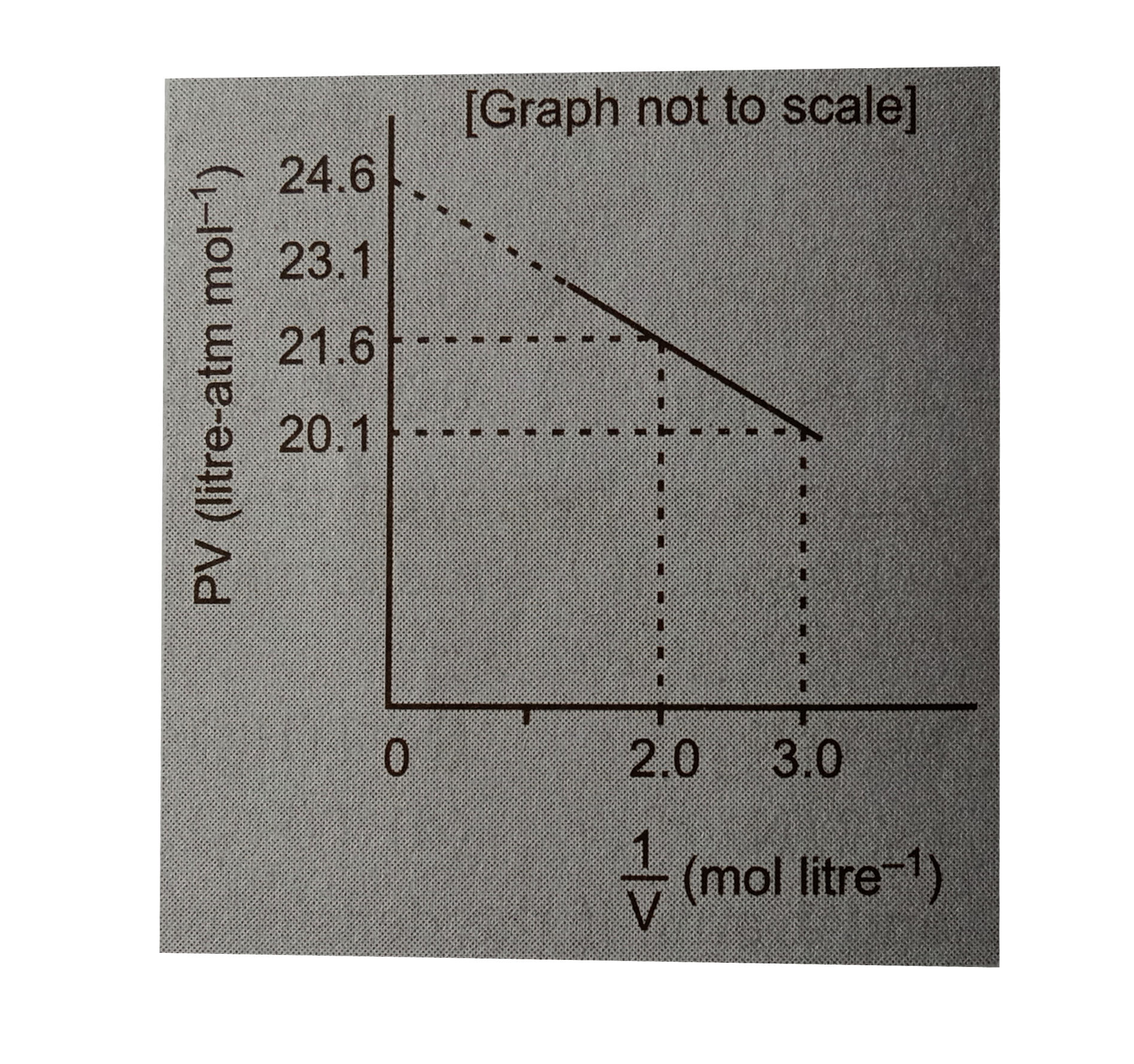Complete Solutions to Objective questions of chapter STATES OF MATTER (GASES AND LIQUIDS) of Class 11 book with complete answers and questions
| Class 11 | CHEMISTRY |
| Chapter | STATES OF MATTER (GASES AND LIQUIDS) |
| OP TANDON | Objective questions |
| Number Of Questions | 100 |
| Academic Year | 2023-24 |
At constant temperature the product of pressure and volume of a given amount of a gas is constant. Ths is :
View SolutionA curve drawn at constant temperature is called an isotherm. This shown the relationship between :
View SolutionCharles' law is represented mathematically as :
View SolutionIn general gas equation, `PV = nRT, V` is the volume of :
View SolutionFor the given ideal gas equation `PV=nRT`, answer the following questions:
In the above equation, the value of universal gas constant depends only upon
View SolutionThe value of gas contant per degree per mol is approximately :
View SolutionWhich one of the following is not the value of R ?
View SolutionOne litre of a gas collected at NTP will occupy at 2 atmospheric pressure and `27^(@)C`
View SolutionIf `10 g` of a gas at atmospheric pressue is cooled from `273^(@)C` to `0^(@)C`, keeping the volume constant, its pressure would become
View Solution56 g of nitrogen and 96 g of oxygen are mixed isothermally at a total pressure of 10 atm. The partial pressures of oxygen and nitrogen (in atm) are respectively:
View Solution273 mL of a gas at STP was taken to `27^(@)C` and 600 mm pressure. The final volume of the gas would be :
View SolutionThe density of the gas is equal to:
[P = Pressure, V = Volume, T = Temperature, R = Gas constant, n = number of mole, M = molecular mass
View SolutionThe density of a gas is `1.964 g dm^(-3)` at 273 K and 76 cm Hg. The gas is:
View SolutionCompressed oxygen is sold at a pressure of 100 atmosphere in a cylinder of 49 litre. The number of moles of oxygen in the cylinder is:
View SolutionOne gram mole of a gas at NTP occupies 22.4 litre as volume. This fact was derived from :
View Solution4.4 g of `CO_(2)` contains how many litre of `CO_(2)` at STP ?
View SolutionFive grams each of the following gases at `87^(@)C` and 750 mm pressure are taken. Which of them will have the least volume ?
View SolutionIf molecular mass of `O_(2)` and `SO_(2)` are 32 and 64 respectively. If one litre of `O_(2)` at `15^(@)C` and 759mm pressure contains N molecules, the number of molecuels in two litre of `SO_(2)` under the same conditions of temperature and pressure will be:
View SolutionThe rate of diffusion of a gas is
View SolutionThe rate of diffusion of hydrogen is about:
View SolutionThe rate of diffusion of methane at a given temperature is twice that of a gas `X`. The molecular weight of `X` is
View SolutionSome moles of `O_(2)` diffuse through a small opening in 18 second. Same number of moles of an unknown gas diffuse through the same opening in 45 second. Molecular mass of the unknown gas is
View SolutionThe critical temperature of a gas is that temperature:
View SolutionThe van der Waals' equation for a real gas is:
View SolutionNon-ideal gases approach ideal behaviour at:
View SolutionA 5 litre flask containing `1.0g` of hydrogen is heated from `300 K` to `600 K` Which of the following statement are correct ? .
View SolutionAssociation of molecules in water is due to:
View SolutionWhich of the following statements is wrong ?
View SolutionWhich one of the following is the wrong statement about the liquid ?
View SolutionWater boils at lower temperature on high altitude because:
View SolutionWhen a student was given a viscometer, the liquid was sucked with difficulty, the liquid may be:
View SolutionMark the statement which is correct:
View SolutionWith the increasing molecular mass of a liquid the velocity:
View SolutionThe viscosity of which of the following liquid is the maximum.
View SolutionThe rise of a liquid in a capillary tube is due to :
View SolutionIf `eta_(1) and eta_(2)` are the coefficients of viscosity of two liquids, `d_(1) and d_(2)` their densities and `t_(1) and t_(2)` the flow times in Ostwald viscometer, then:
View SolutionThe rms speed of hydrogen molecules at room temperature is `2400 ms^(-1)`. At room temperature the rms speed of oxygen molecules would be:
View SolutionThe molecules of which of the following gas have highest speed ?
View SolutionConsider a mixture of oxygen and hydrogen kept at room temperature, As compared to a hydrogen molecule an oxygen molecule hits the wall
View Solution`X mL` of `H_(2)` gas effuses through a hole in a container in `5 s`. The time taken for the effusion of the same volume of the gas specified below, under identical conditions, is
View SolutionIf the universal gas constant is 8.3 joule `mol^(-1) K^(-1)` and the Avogadro's number is `6 xx 10^(23)`. The mean kinetic energy of the oxygen molecules at `327^(@)C` will be :
View SolutionIf increase in temperature and volume of air ideal gas is two times, then intitial pressure of P changes to:
View SolutionThe average kinetic energy of one molecule of an ideal gas at `27^(@)C` and 1 atm pressure is:
View SolutionThe respective speeds of five molecules are 2, 1.5, 1.6, 1.6 and 1.2 km/sec. The most probable speed in km/sec will be:
View SolutionIf one mole of a monoatomic gas `(gamma=5//3)` is mixed with one mole of a diatomic gas `(gamma = 7//5)` the value of `gamma` for the mixture is .
View SolutionThe root mean square speed of hydrogen molecules of an ideal hydrogen gas kept in a gas chamber at `0^(@)C` is 3180 m/s. The pressure on the hydrogen gas is ………..
(Density of hydrogen gas is `8.99xx10^(-2)kg//m^(3)`, 1 atmosphere= `1.01xx10^(5)N/m^(2)`
View Solution`CH_(4)` diffuse two times faster than a gas X. The number of molecules present in 32 g of gas X is: (N is Avogardro number)
View SolutionAt what temperature would the rms speed of a gas molecule have twice its value at `100^(@)C`
View SolutionFind the rms speed of an argon molecule at `27^(@)C` (Molecular weight of argon = 40 gm/mol)
View SolutionAt a temperature `T, K`, the pressure of `4.0 gm` argon in a bulb is `P`. The bulb is put in a bath having temperature higher by `50 K` than the first one `0.8` of argon gas had to be removed to maintain original pressure. The temperature `T` is
View SolutionAt `25^(@)C` and 730 mm pressure, 380 mL of dry oxygen was collected. If the temperature is constant, what volume will be oxygen occupy at `760 mm` pressure ?
View SolutionWhich of the following expressions regarding the unit of coefficient of viscosity is not true?
View SolutionThe boiling point of water, ethyl alcohol and diethyl ether are `100^(@)C, 78.5^(@)C` respectively. The intermolecular forces will be in the order of:
View SolutionA bubble of gas released at the bottom of a lake increases to four times its original volume when it reaches the surface. Assuming that atmospheric pressure is equivalent to the pressure exerted by a column of water 10 m high, what is the depth of the lake?
View SolutionThe increasing order of effusion among the gases `H_(2), O_(2), NH_(3)` and `CO_(2)` is
View SolutionAccording to Graham's law, at a given temperature, the ratio of the rates of diffusion `r_(A)//r_(B)` of gases `A` and `B` is given by
View SolutionThe root mean square velocity of an ideal gas to constant pressure varies with density (`d`) as
View SolutionMatch the following
`{:(,"List- I",,"List II",),(A,"Inversion temperature",(i),a//Rb,),(B,"Boyle's temperature",(ii),8a//27 Rb,),(C,"Critical temperature",(iii),2a//Rb,):}`
View SolutionFor three different gases values of van der Waals' constant 'a' and 'b' are given. What is the correct order of liquefaction of gases ?
`{:("Gases",a,b,),(X_(2),1.3,0.090,),(Y_(2),4.1,0.023,),(Z_(2),2.2,0.075,):}`
View SolutionMatch the following
`{:(,"List -I",,"List -II",),(A,P_(c),(i),3b,),(B,V_(c),(ii),8a//27bR,),(C,T_(c),(iii),a//27 b^(2),):}`
View SolutionBy what factor does the average velocity of a gaseous molecule increase when the temperature (in Kelvin) is doubled?
View SolutionThe van der Waals' constant 'a' for the gases `O_(2), N_(2), NH_(3) "and " CH_(4)` are 1.36, 1.39, 4.17 and 2.253 respectively, the gas which can be most easily liquefied is :
View SolutionThe Boyle temperature of three gases are given in the table :
`{:("Gas","Boyle Temperature (K)",),("Ethene",735,),("Oxygen",400,),("Hydrigen",110,):}`
If the compressibility factor was measured at 400 K, the gases are :

View SolutionJoule-Thomson coefficient is zero at:
View SolutionTwo gases A and B having the same volume diffuse through a porous partition in 20 and 10 seconds respectively, the molecular mass of 'A' is 49 amu. Molecular mass of 'b' will be:
View Solution5 g of unknown gas has pressure P at a temperature T K in a vessel. On increasing the temperature by `50^(@)C`, 1 g of the gas was given out to maintain the pressure P. The original temperature was :
View SolutionWhich of the following expressions correctly represents the relationship between the average molar kinetic energies `(KE)` of `CO` and `N_(2)` molecules at the same temperature?
View SolutionWhich of the following exhibits the weakest intermolecular forces?
View SolutionThe compressibility of a gas is less than unity at `STP`, therefore,
View SolutionThe compressibilty factor for a real gas at high pressure is:
View SolutionThe rms velocity of hydrogen is `sqrt7` times the rms velocity of nitrogen. If T is the temperature of the gas :
View SolutionKinetic energy of a molecule is zero at `0^(@)C`
View SolutionDensities of two gases are in the ratio `1: 2` and their temperatures are in the ratio `2:1`, then the ratio of their respective pressure is
View SolutionFor a fixed mass of an ideal gas the correct representation is:
View Solution4.4 g of a gas at STP occupies a volume of 2.24 L. The gas can be :
View SolutionAt `0^(@)C` and one atm pressure, a gas occupies 100 cc. If the pressure is increased to one and a half-time and temprature is increased by one-third of absolute temperature, then final volume of the gas will be:
View SolutionCalculate the total pressure in a mixture of `4 g` of oxygen and `2 g` of hydrogen confined in a total volume of `1 L` at `0^(@)C`.
View SolutionDensity ratio of `O_(2) " and " H_(2)` is `16 : 1`. The ratio of their rms velocities will be :
View SolutionThe rate of diffusion of a gas having molecular weight just double of nitrogen gas is `56 m L s^(-1)`. The rate of diffusion of nitrgoen will be :
View SolutionThe density of air is 0.00130 g/mL. The vapour density of air will be :
View SolutionFor an ideal gas, number of moles per litre in terms of its pressure P, gas constant R and temperature T is
View SolutionThe following is a method to determine the surface tension of liquids :
View SolutionWhich of the following volume-temperature `(V-I)` plots represents the behaviour of `1 "mole"` of an ideal gas at the atmospheric pressure?
View SolutionThe maximum number of molecules is present in
View SolutionThe root mean square speed of one mole of a monoatomic gas having molecular mass `M` is `u_(rms)` The relation between the average kinetic energy `(E)` of the gas and `u_9rms)` is .
View SolutionWhich of the following is not a property of liquid state ?
View SolutionA one litre glass bulb is evacuated and weighed. The weight is 500 g. It is then filled with an ideal gas at 1 atm pressure at 312.5 K. The weight of the filled bulb is 501.2 g. The molar weight of the gas is : `(R = 8 xx 10^(-2) L atm K^(-1) mol^(-1))`
View SolutionWhich one of the following statement is not true about the effect of an increase in temperature on the distribution of molecular speed of gas ? .
View SolutionA gas can be liquefied
View SolutionTo what temperature must a neon gas sample be heated to double its pressure, if the initial volume of gas at `75^(@)C` is decreased by 15.0% by cooling the gas
View SolutionWhich of the following liquids has the maximum surface tension at a given temperature ?
View SolutionIf a volume containing gas is compressed to half, how many moles of gas remained in the vessel ?
View SolutionThe volume-temperature graphs of a given mass of an ideal gas at constant pressure are shown below. What is the correct order of pressure ?

View SolutionEqual masses of methane and oxygen are mixed in an empty container at `25^(@)C`. The fraction of the total pressure exerted by oxygen is:
View Solutiona' and 'b' are van der Waals' constants for gases Chlorine is more easily liquefied than ethane because .
View SolutionThe term that corrects for the attractive forces present in a real gas in the van der Waal's equation is
View SolutionThe van der Waals' coefficient of the inert gases He, Ar and Xe are given below :
`{:("Inert Gas",a ("atm "dm^(6) mol^(-2)),b (10^(-2) dm^(3) mol^(-1)),),(" "He," "0.34," "2.38,),(" "Ar," "1.337," "3.20,),(" "Xe," "4.137," "5.16,):}`
Choose the appropriate pair to complete the following statement, ''The increase in the value of 'a' signifies the increasing importance of .... interaction while increase in the value of 'b' is due to....''
View SolutionFor one mole of a van der Waals gas when `b =0` and `T =30 K` the `PV vs1//V` plot is shown below The value of the van Waals constant a `("atm litre"^(2) mol^(-2))` is
 .
.
View SolutionFor gaseous state, if most probable speed is denoted by `C^(**)` average speed by `barC` and root square speed by `C`, then for a large number of molecules, the ratios of these speeds are
View SolutionIf `Z` is a compressibility factor, van der Waals' equation at low pressure can be written as
View Solution
Objective questions questions and complete solutions for chapter STATES OF MATTER (GASES AND LIQUIDS) of G.R. BATHLA & SONS CHEMISTRY (HINGLISH) of Class 11